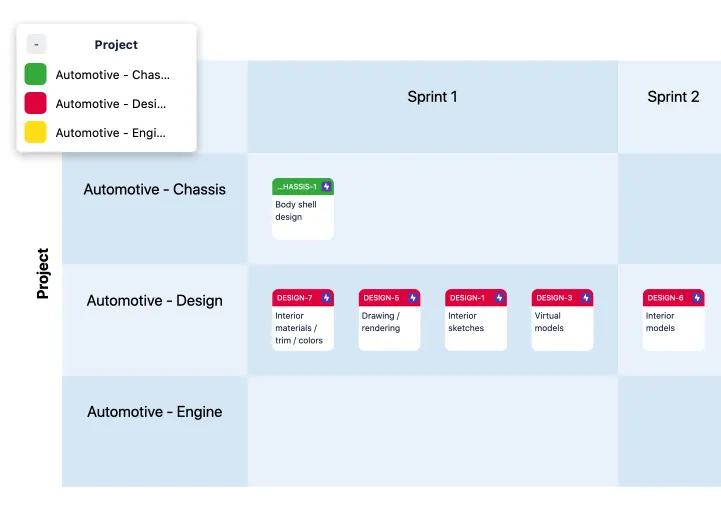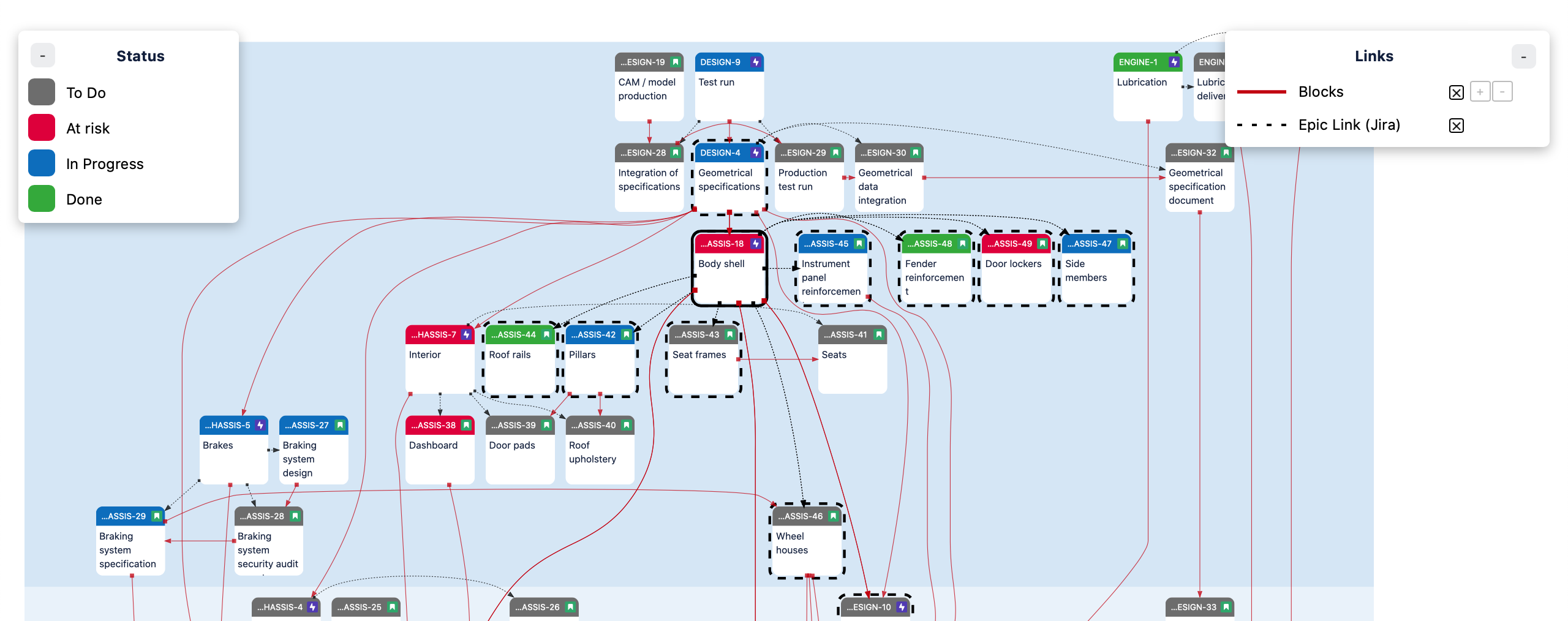Use cases
Discover how Dependency Map makes your job easier
We have gathered use cases for Product owners, Scrum masters and Release train engineers. Choose the role that suits you best and get relevant use cases for your needs.
Release train engineer
Large-scale planning and monitoring made easy!
In the realm of software development, Release Train Engineers (RTEs) face the challenging task of orchestrating complex projects while ensuring seamless collaboration among agile teams.
Dependency Map that is designed to streamline responsibilities, foster transparency, and enhance project delivery.
To plan and monitor large-scale projects, you have to collect and integrate data from multiple Jira projects. Frameworks like SaFE or Scaled Agile rely on views where Epics and Stories can be assigned to different teams and different releases.
This helps you find, assess, and manage dependencies between teams and tasks. The flexibility of Dependency Map greatly simplifies such work!
To plan and monitor large-scale projects, you have to collect and integrate data from multiple Jira projects.
Also, frameworks like SaFE or Scaled Agile rely upon views where Epics and Stories can be assigned to different teams and different releases, and where you can find, assess, and manage dependencies between teams and tasks.
The flexibility of Dependency Map greatly simplifies such work!
Once your iteration is underway, Dependency Map makes it simple to track progress.
This example shows the Epics and Stories in an ongoing Sprint. The issue icons denote the Issue Type and the colors represent Priority.
There are two types of arrows: the dashed black arrows is the Epic-to-Story breakdown, and the red arrows are the dependencies.
When you select an issue that is at risk, any related issues become highlighted too. This makes it easy to see the impact of potential delays.
Join 100+ companies improving their agile workflow






